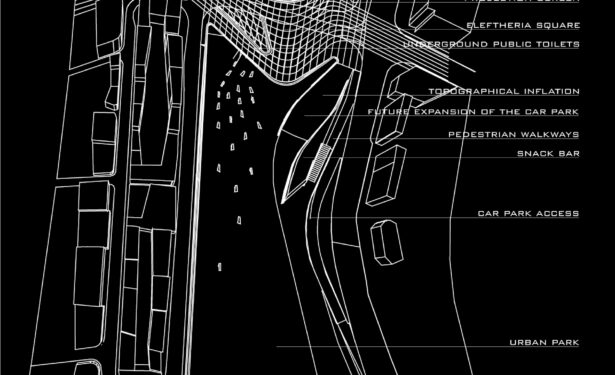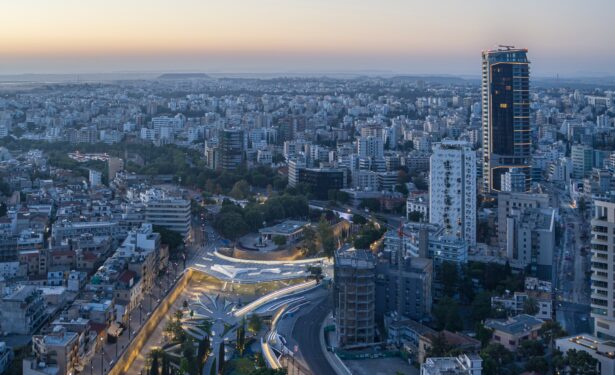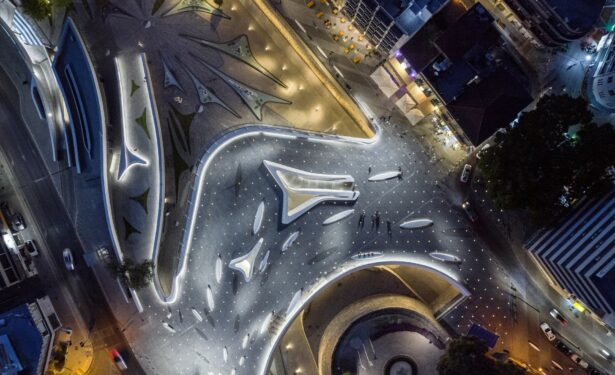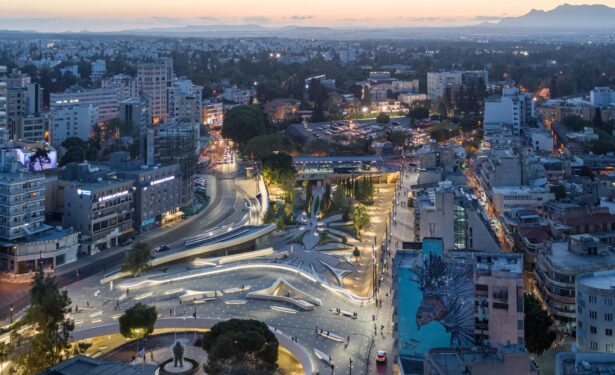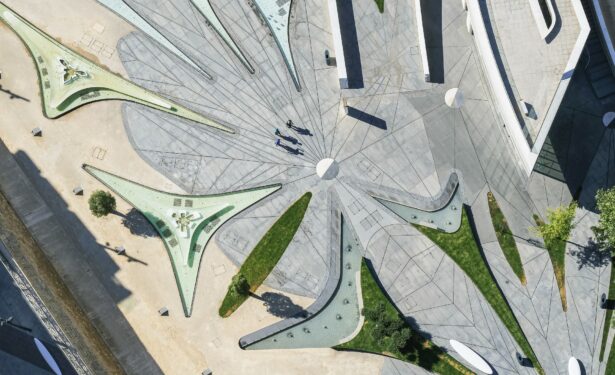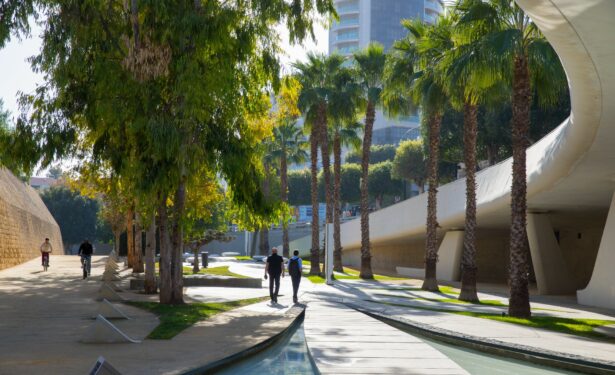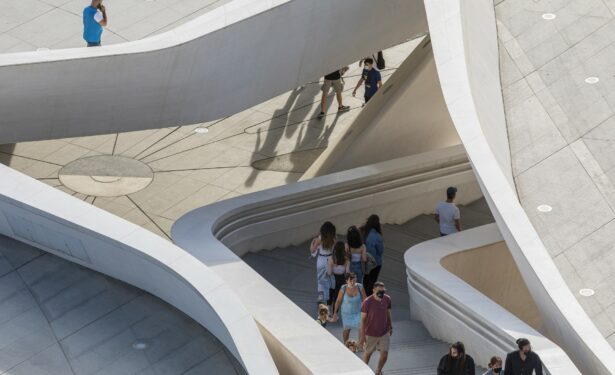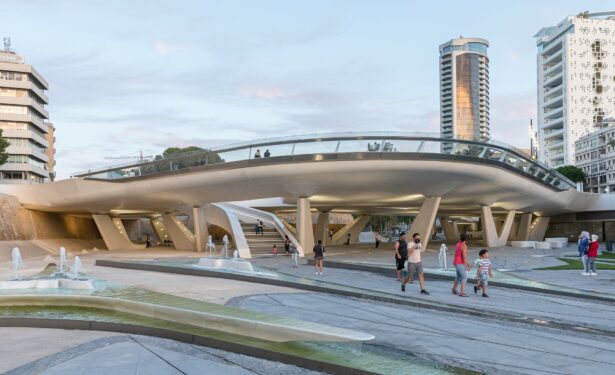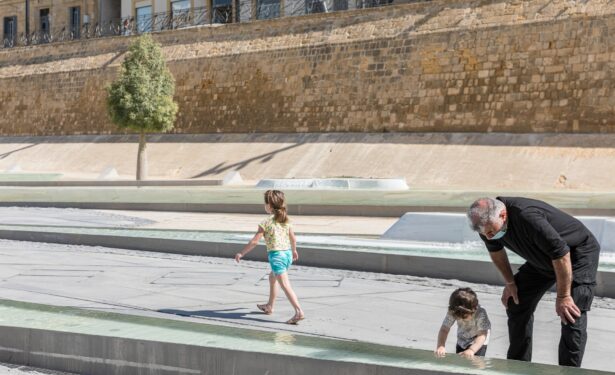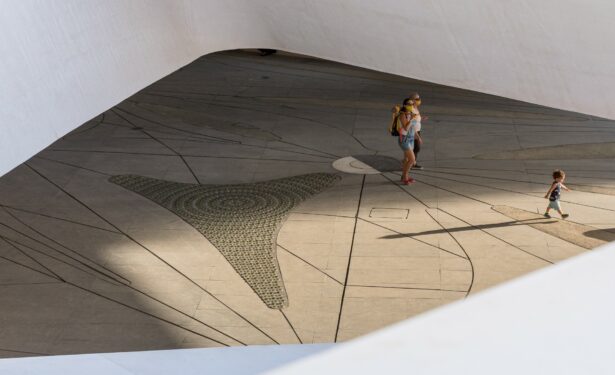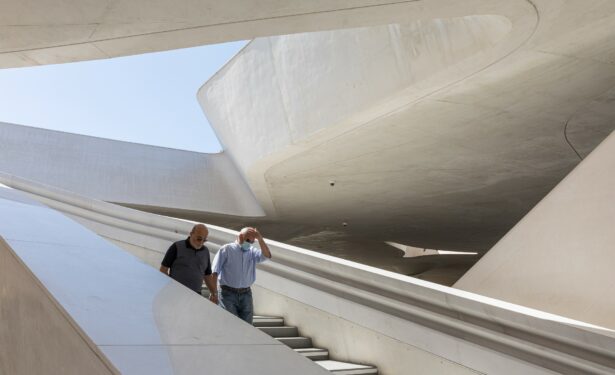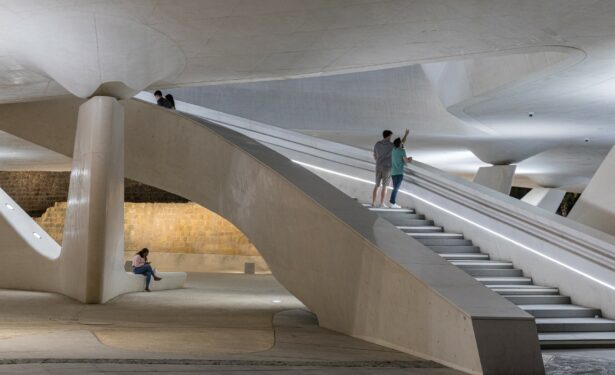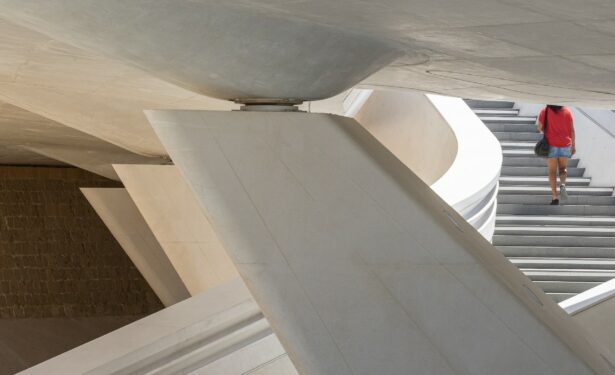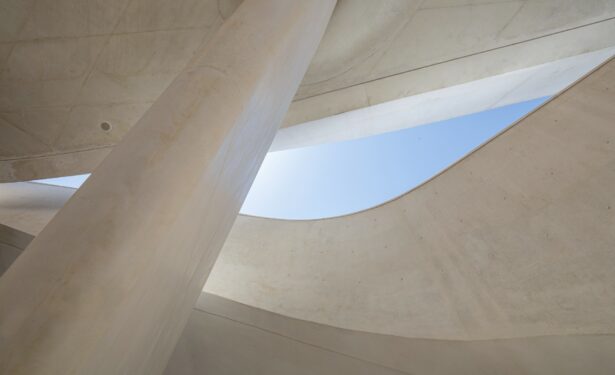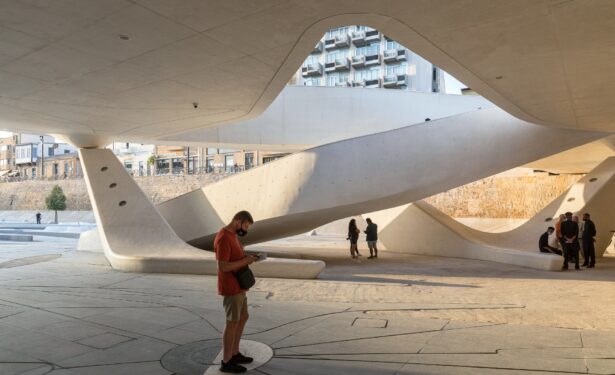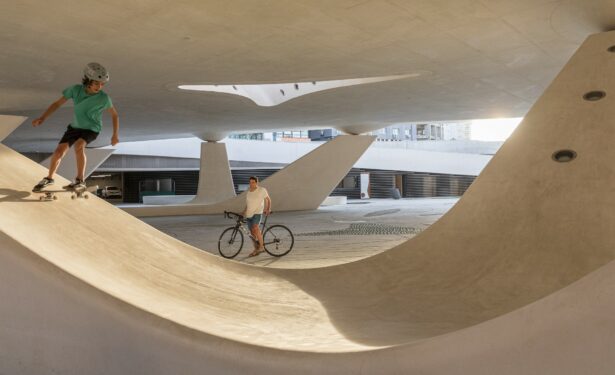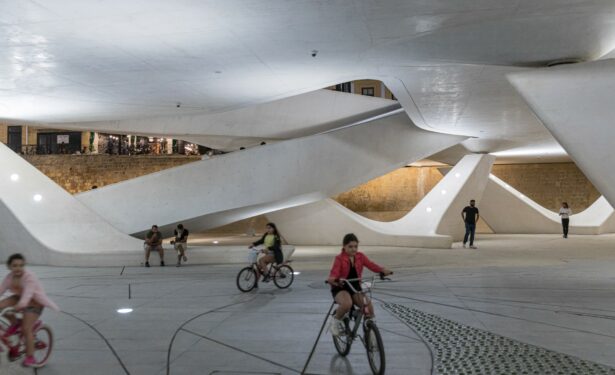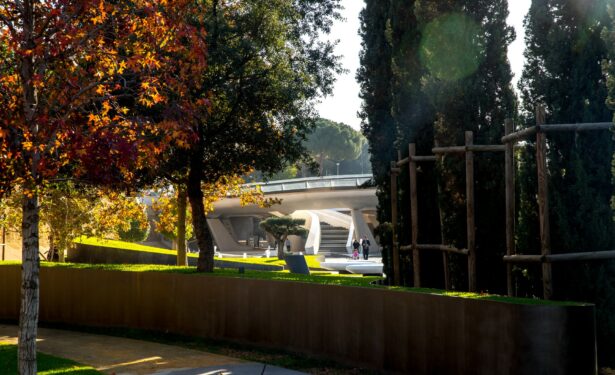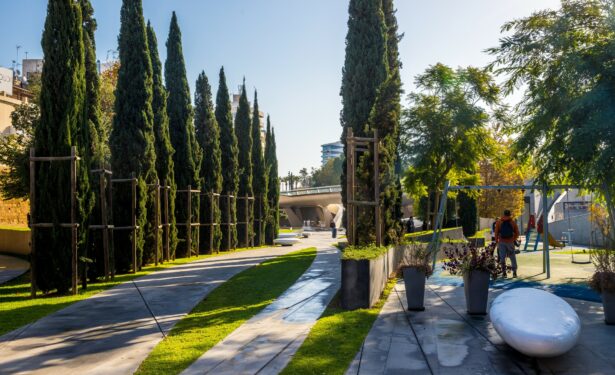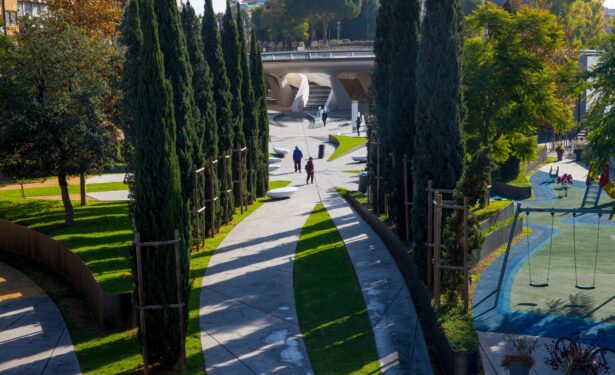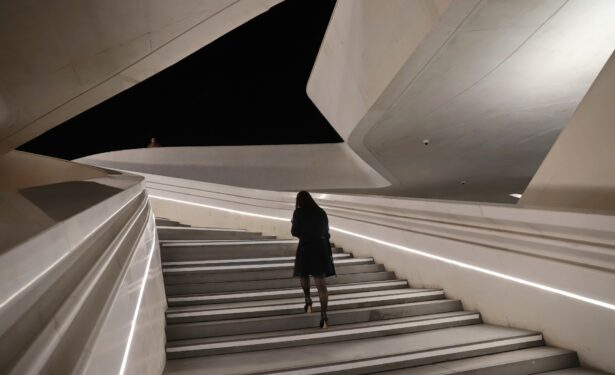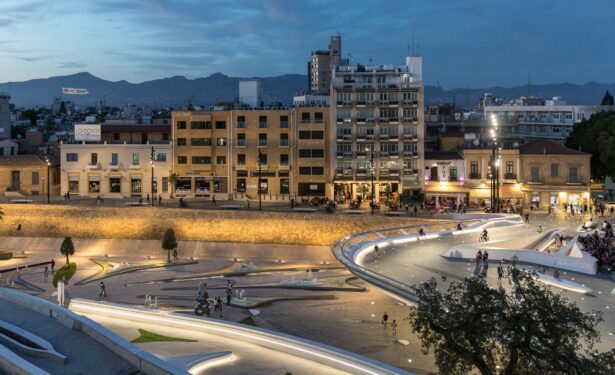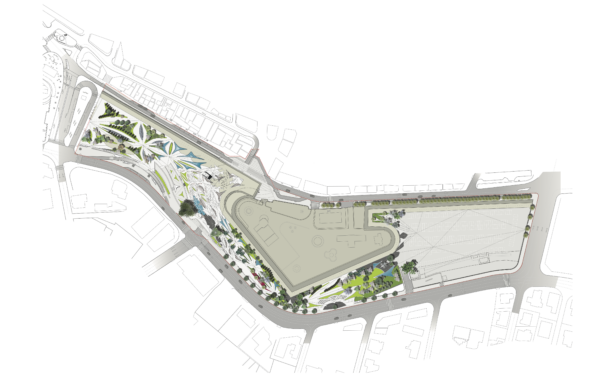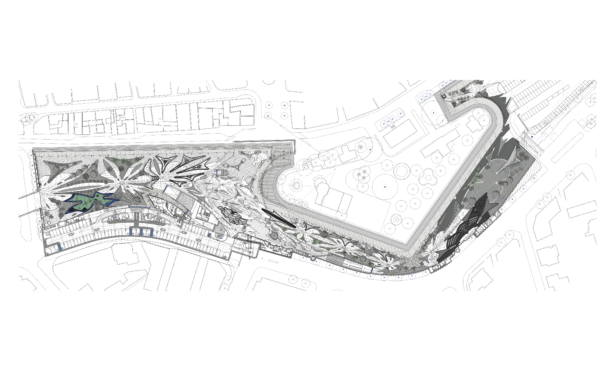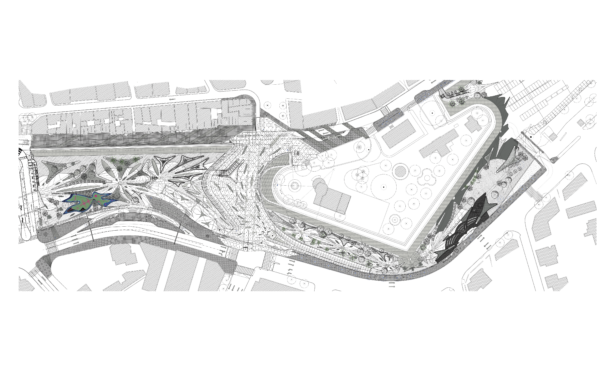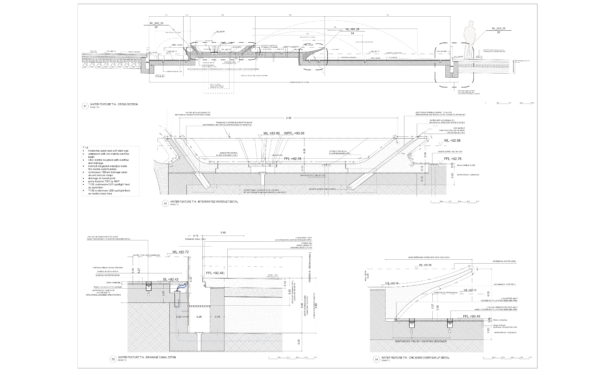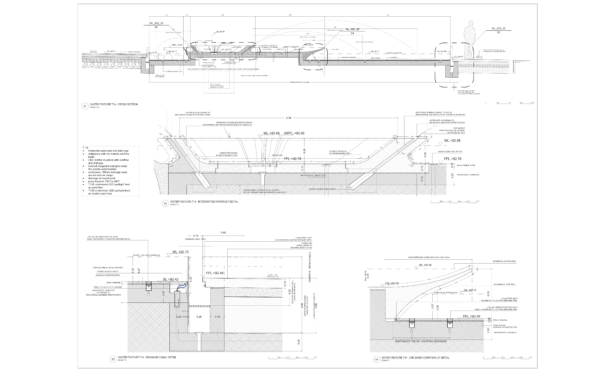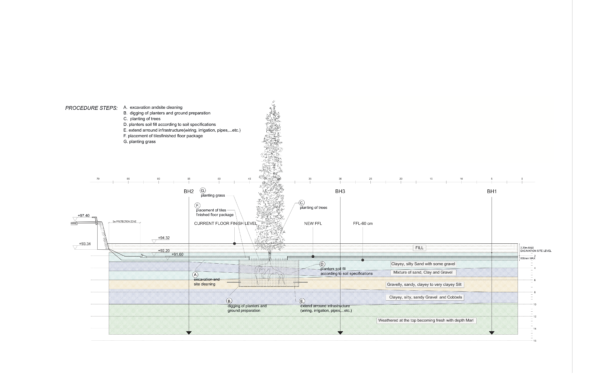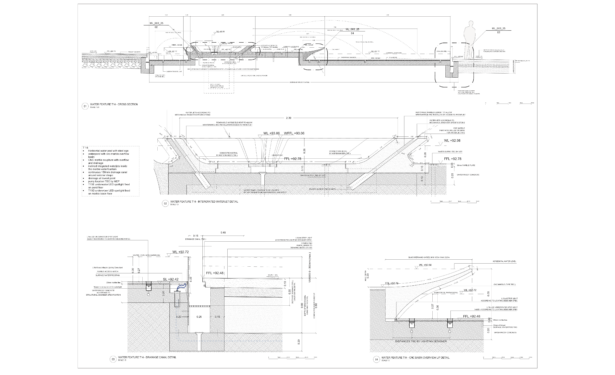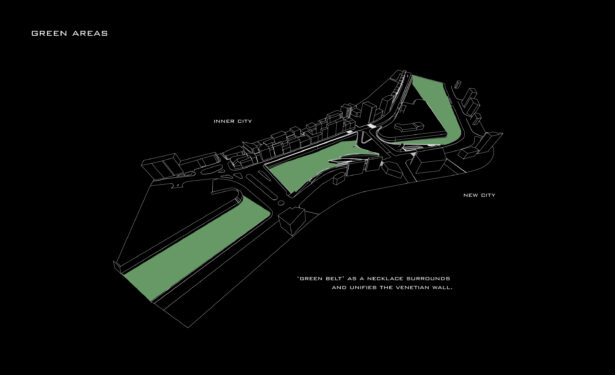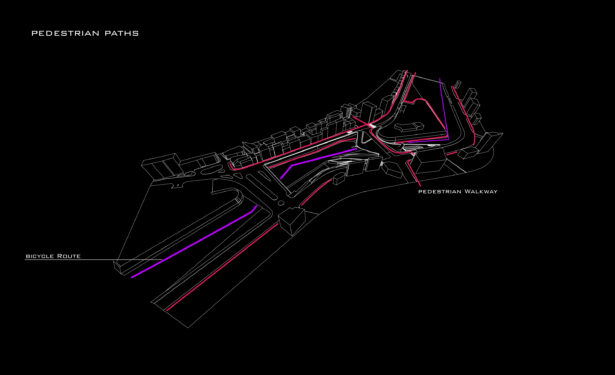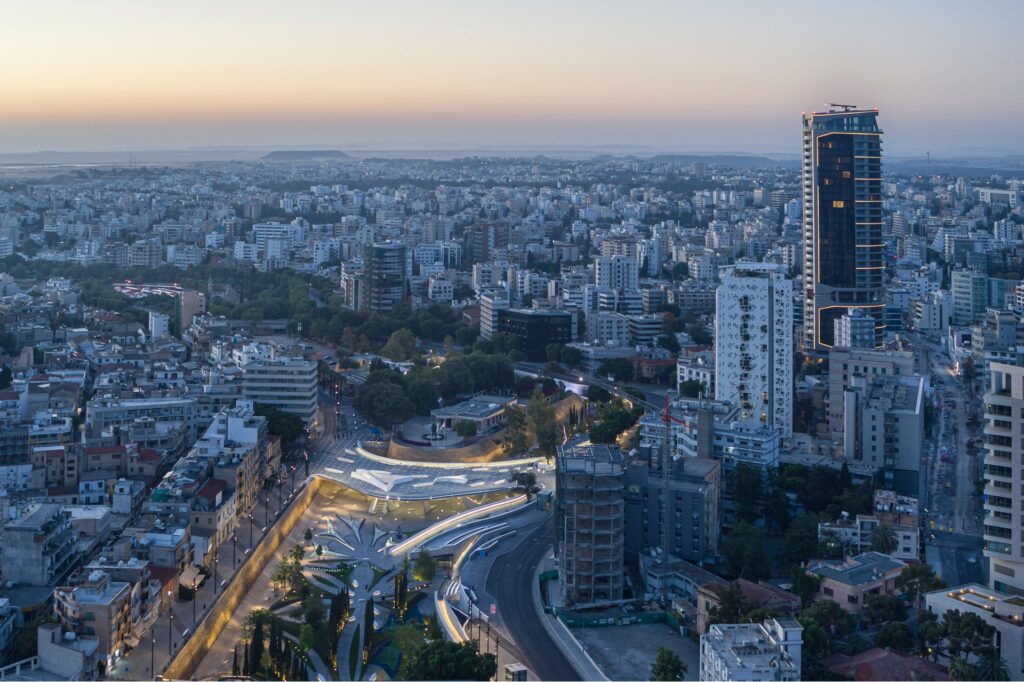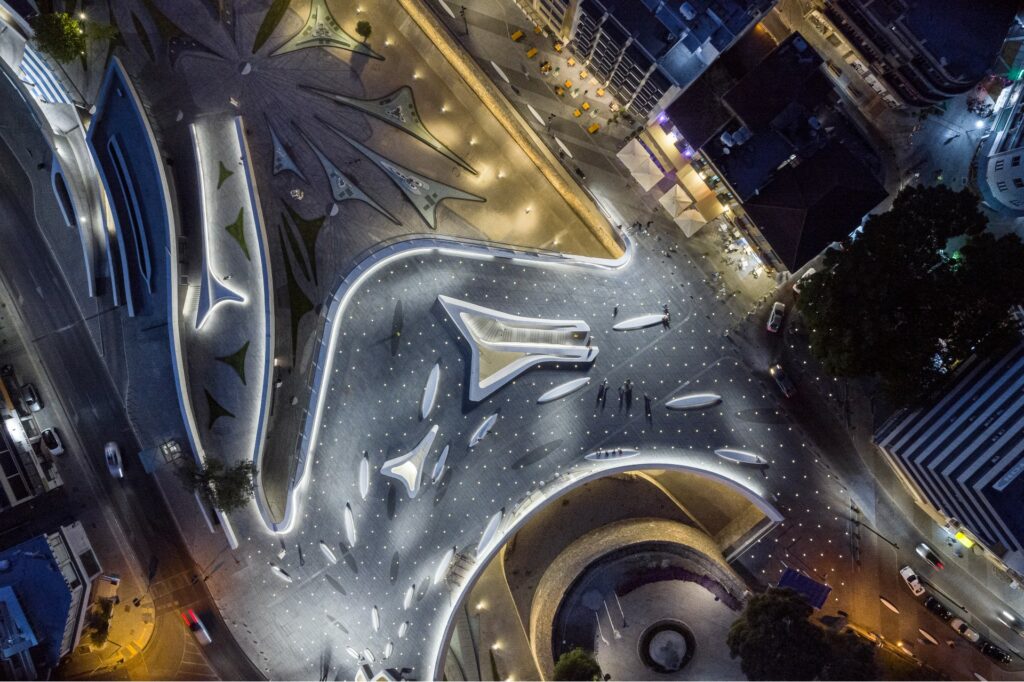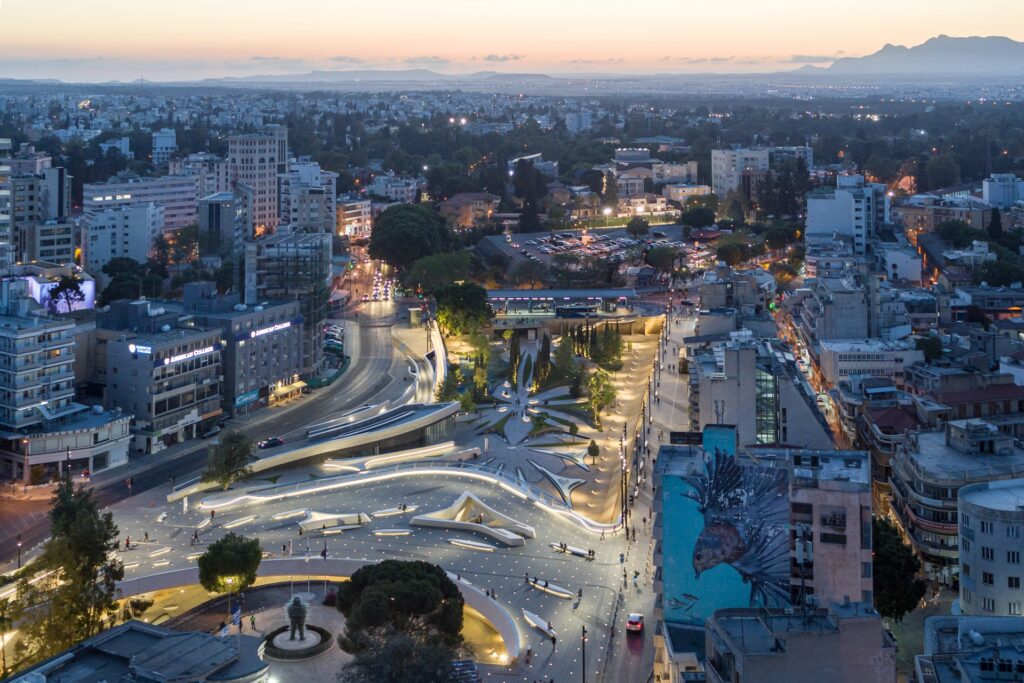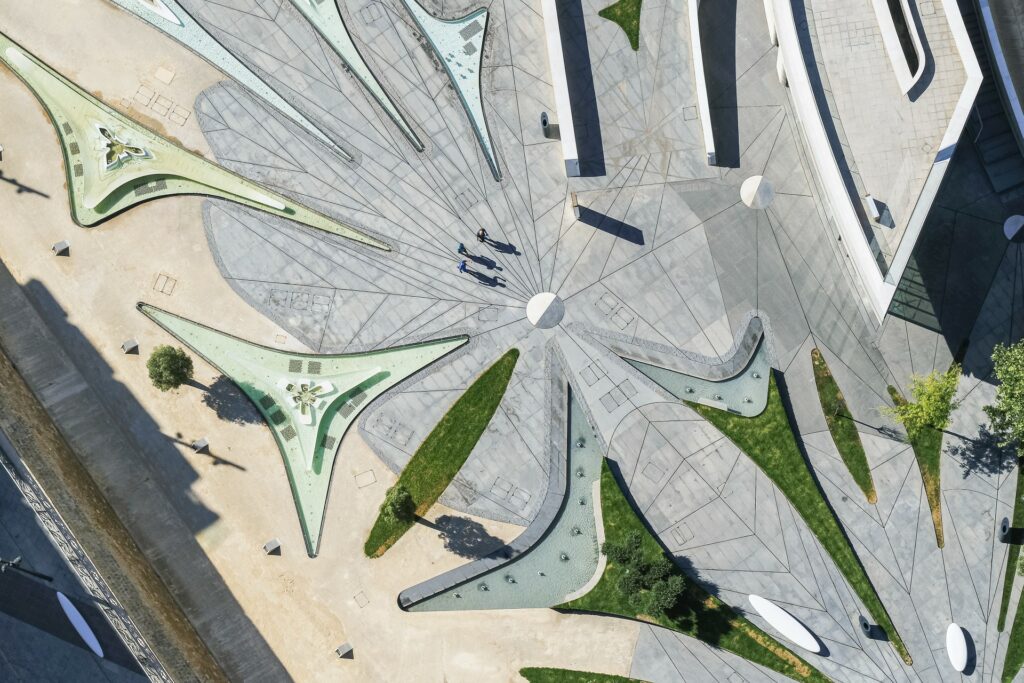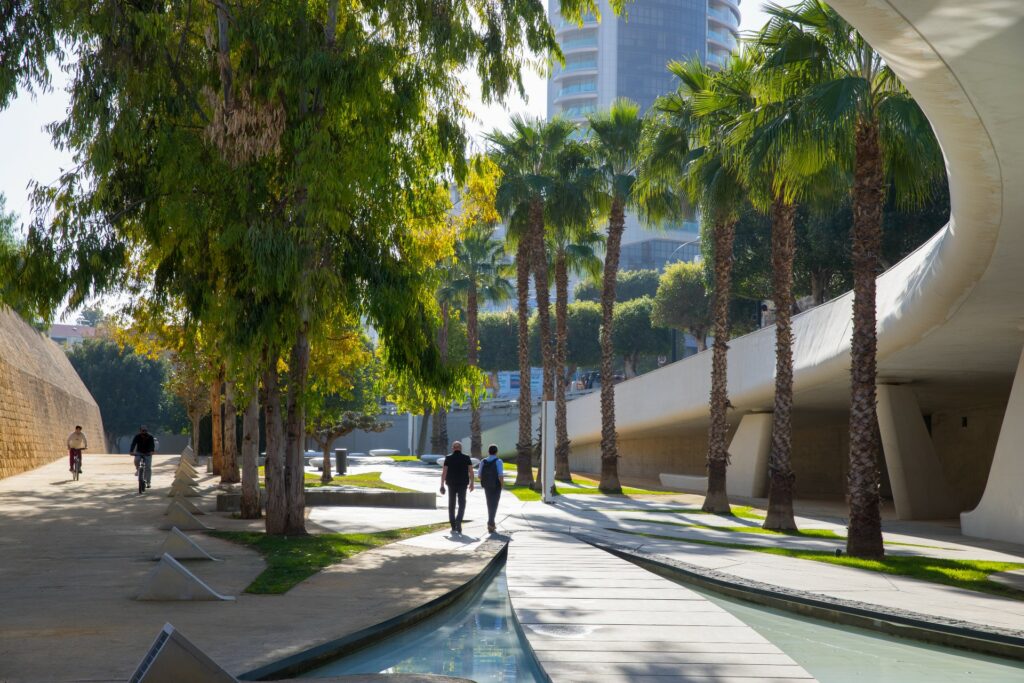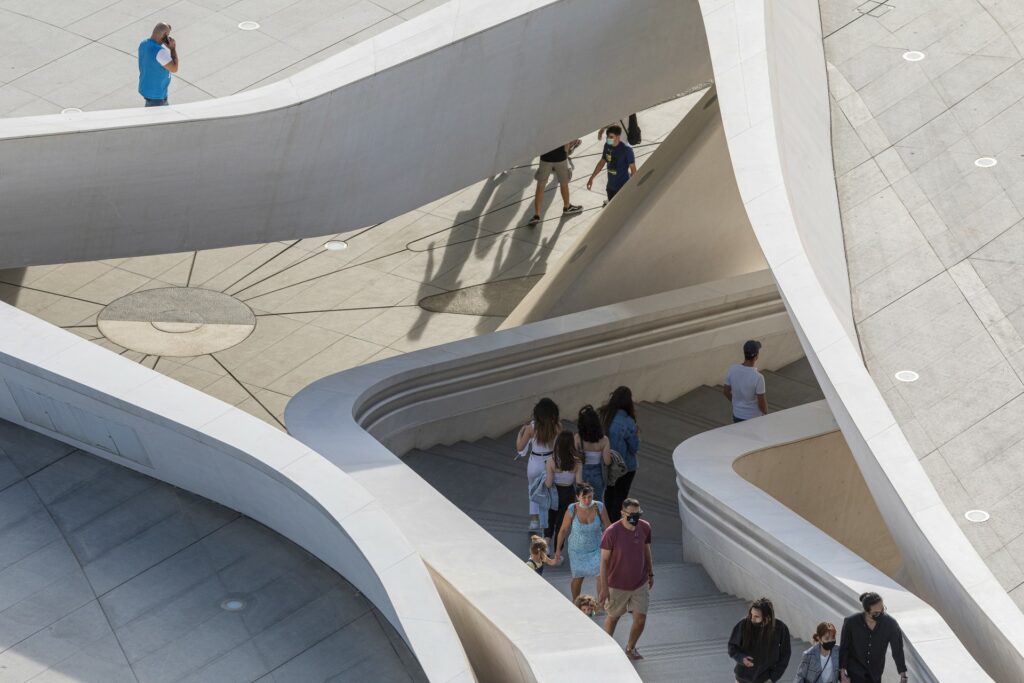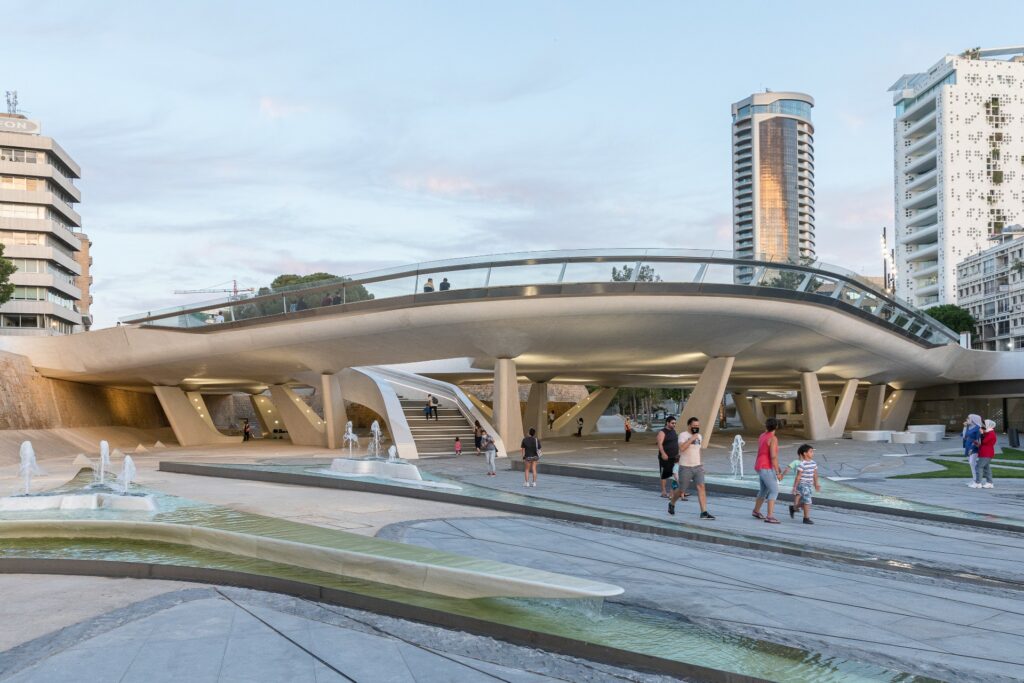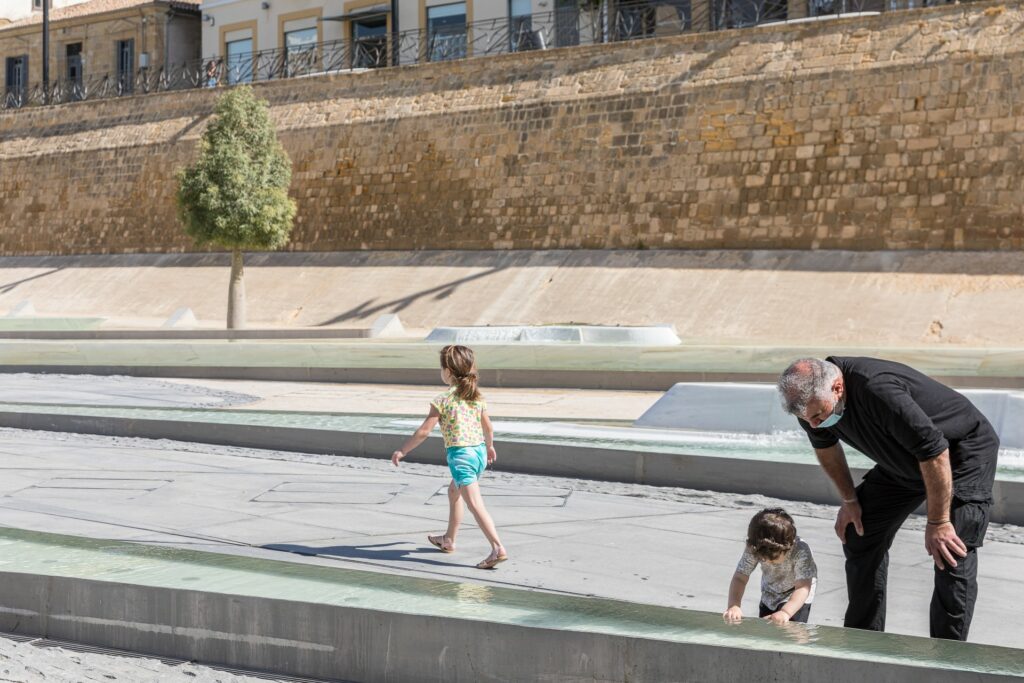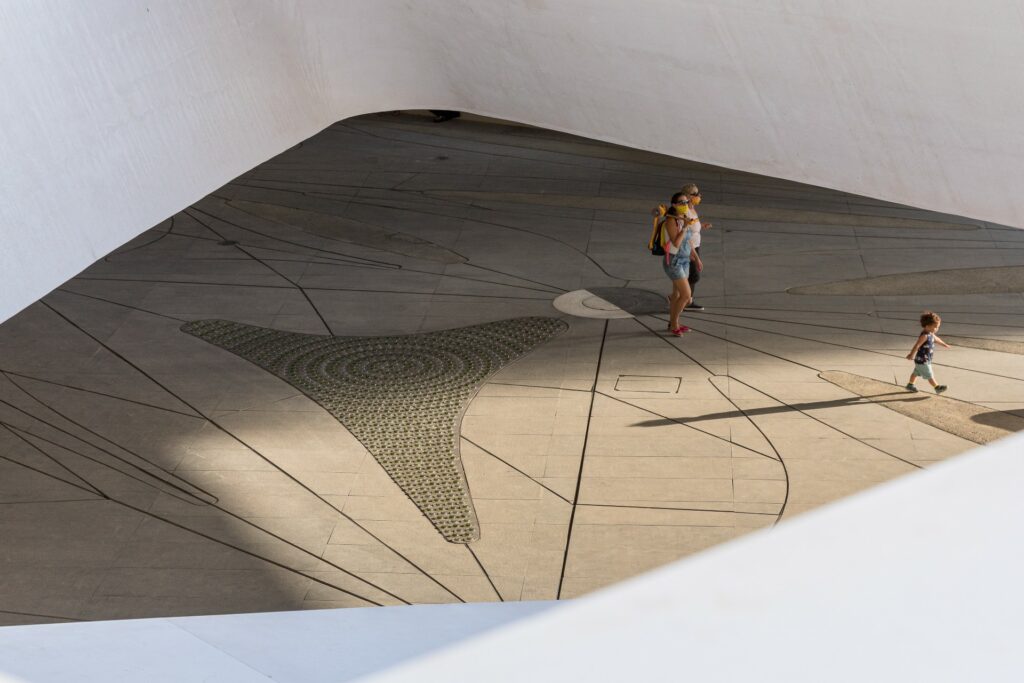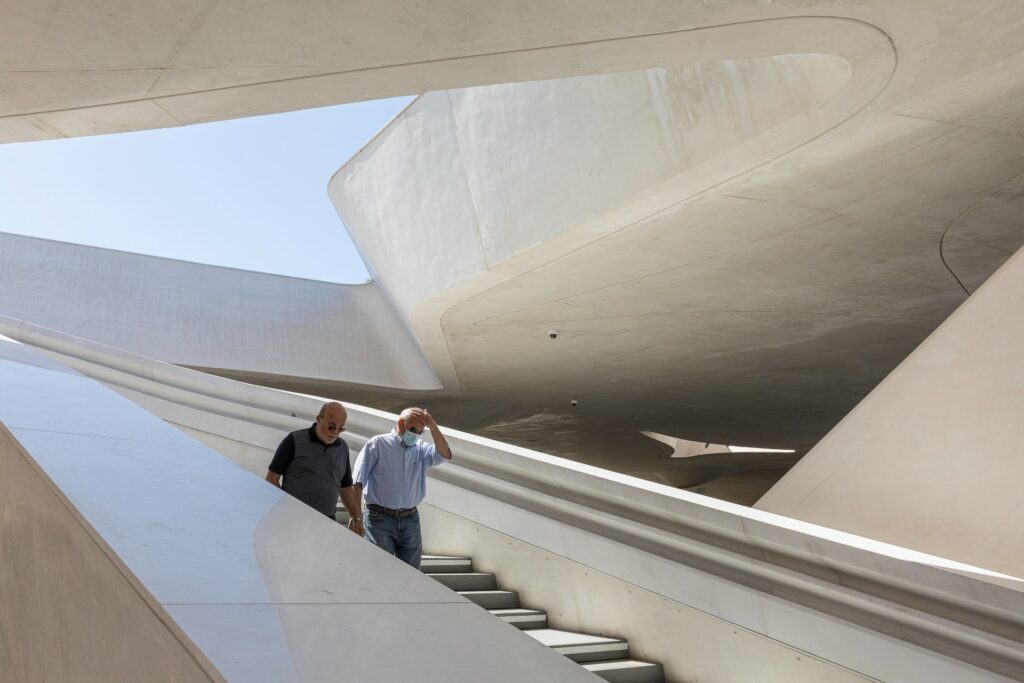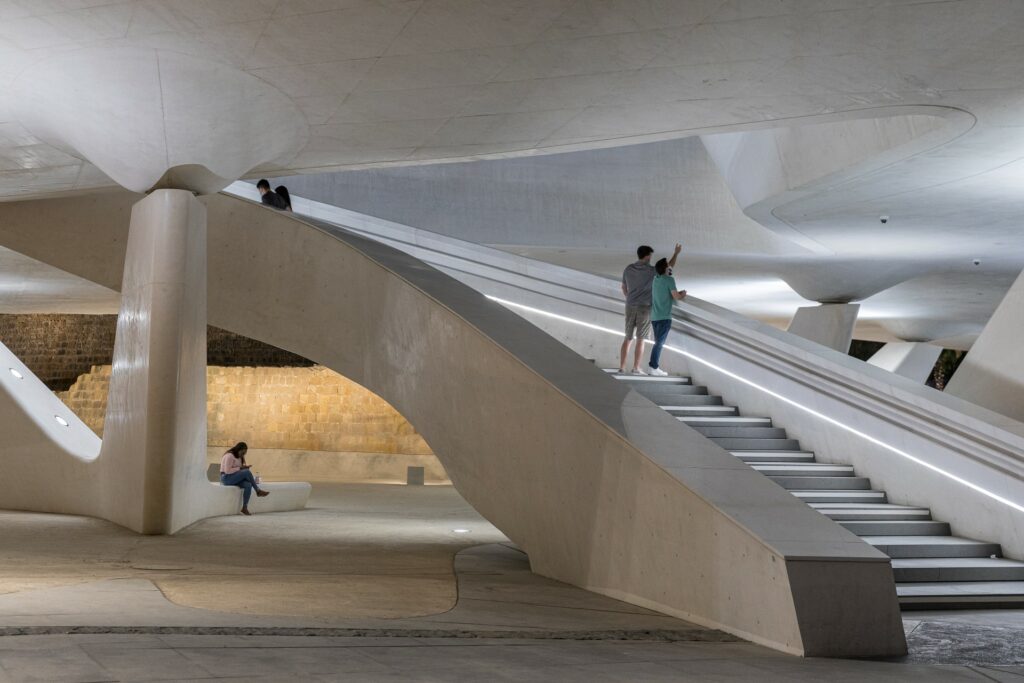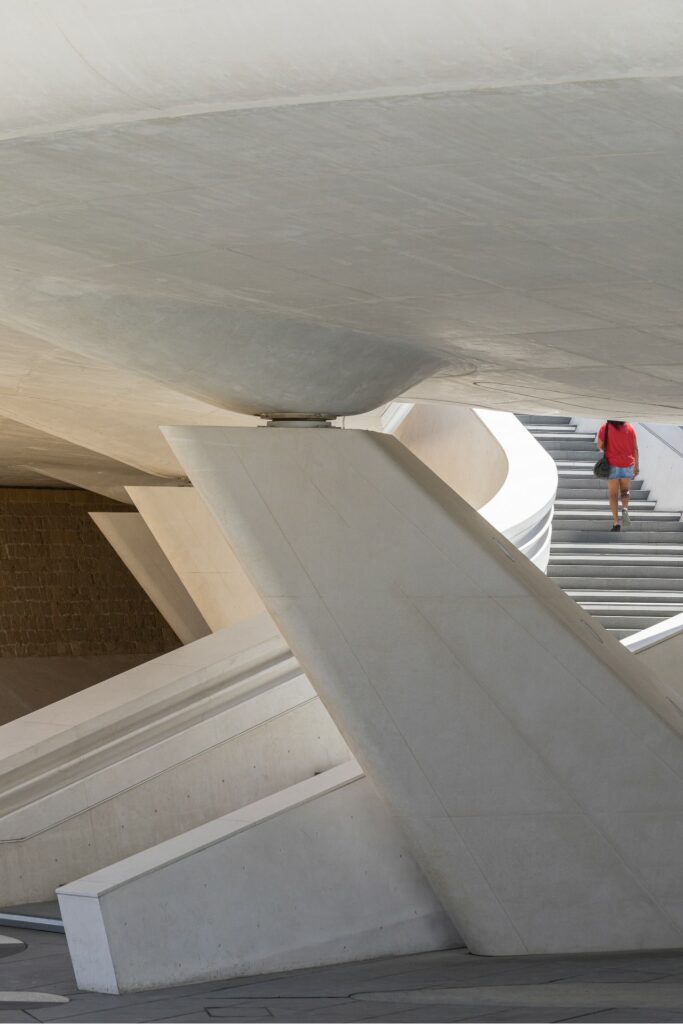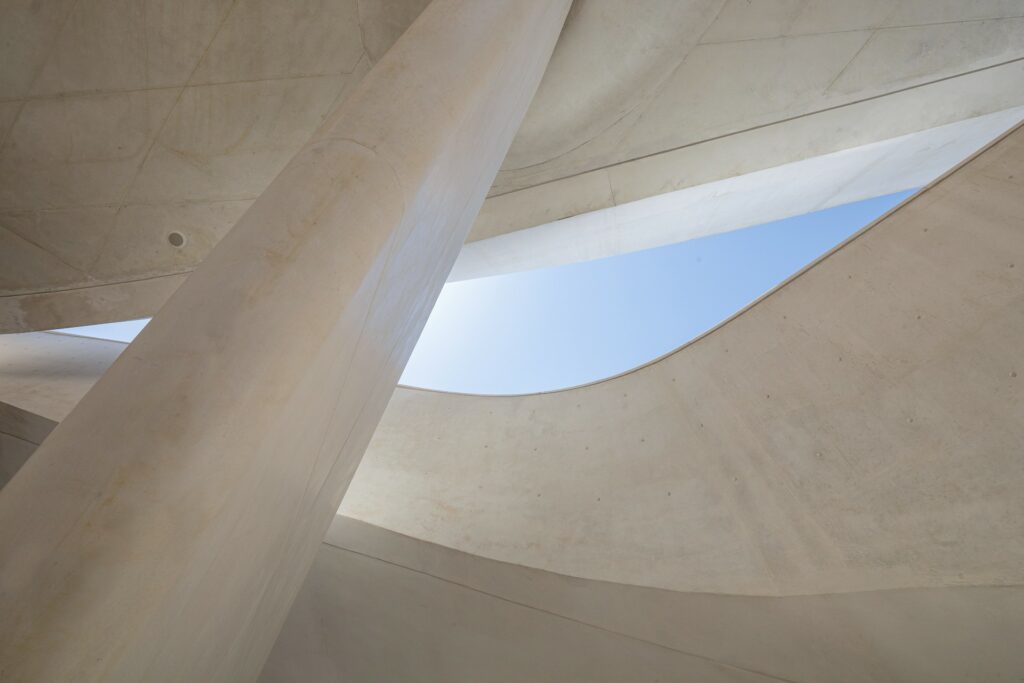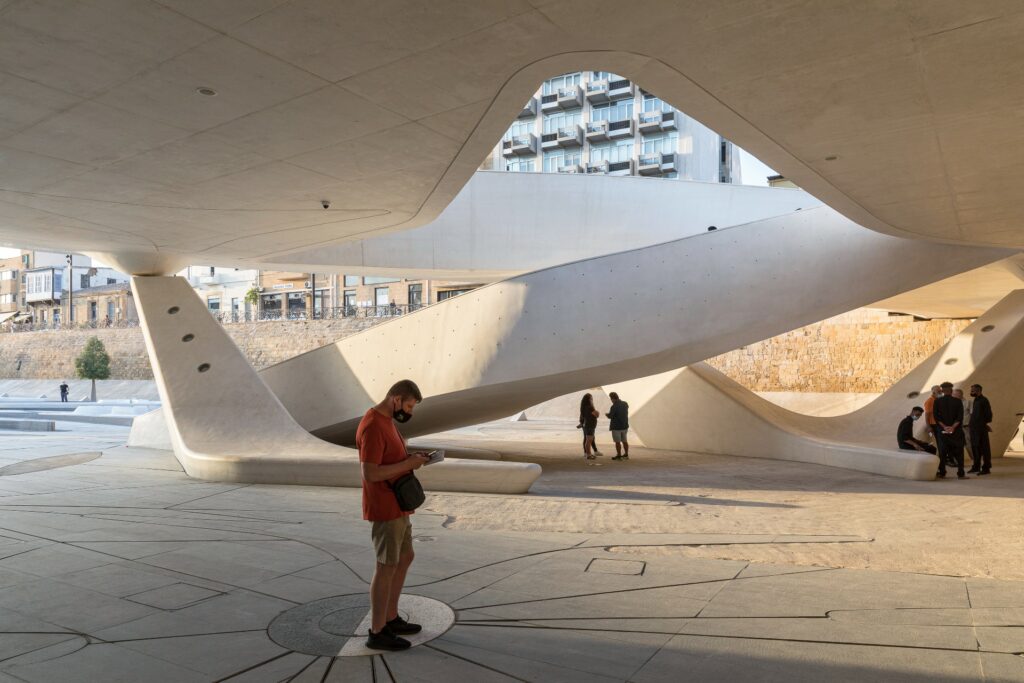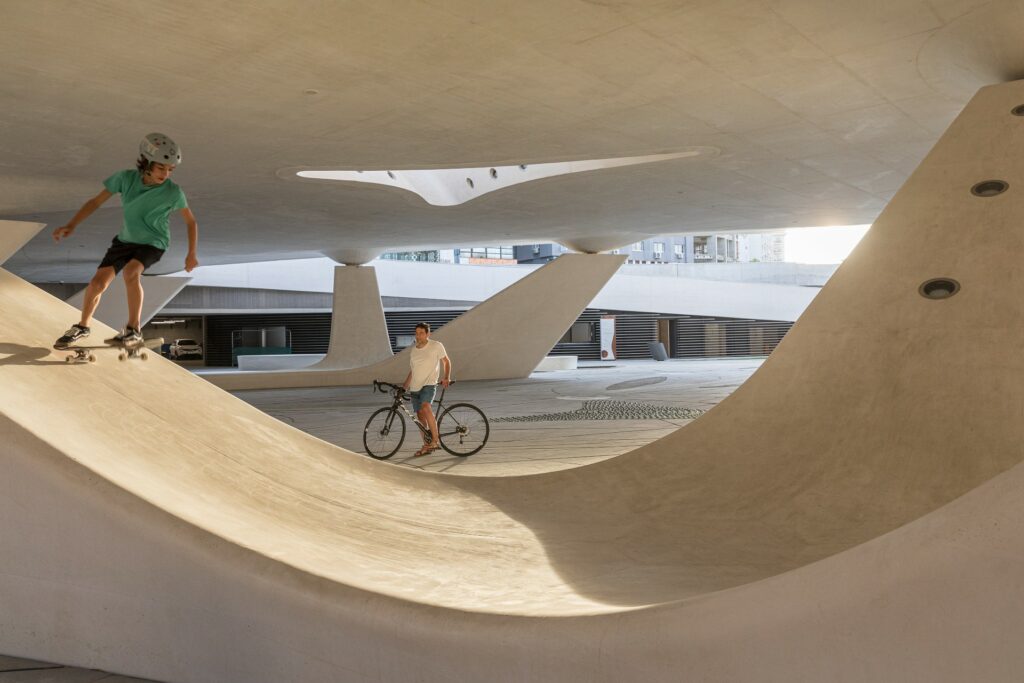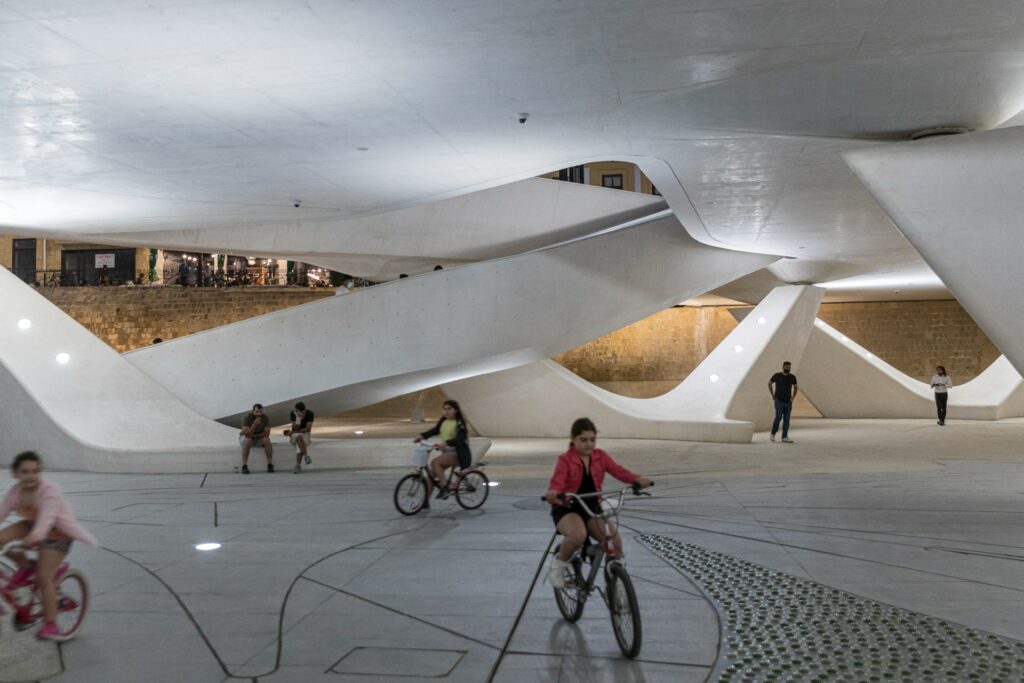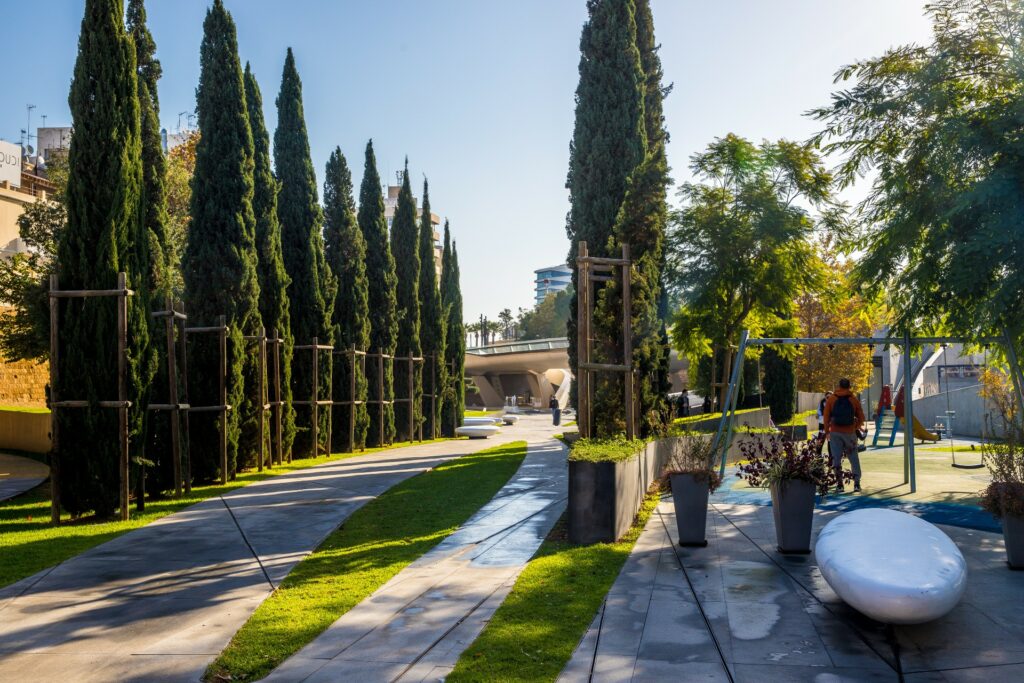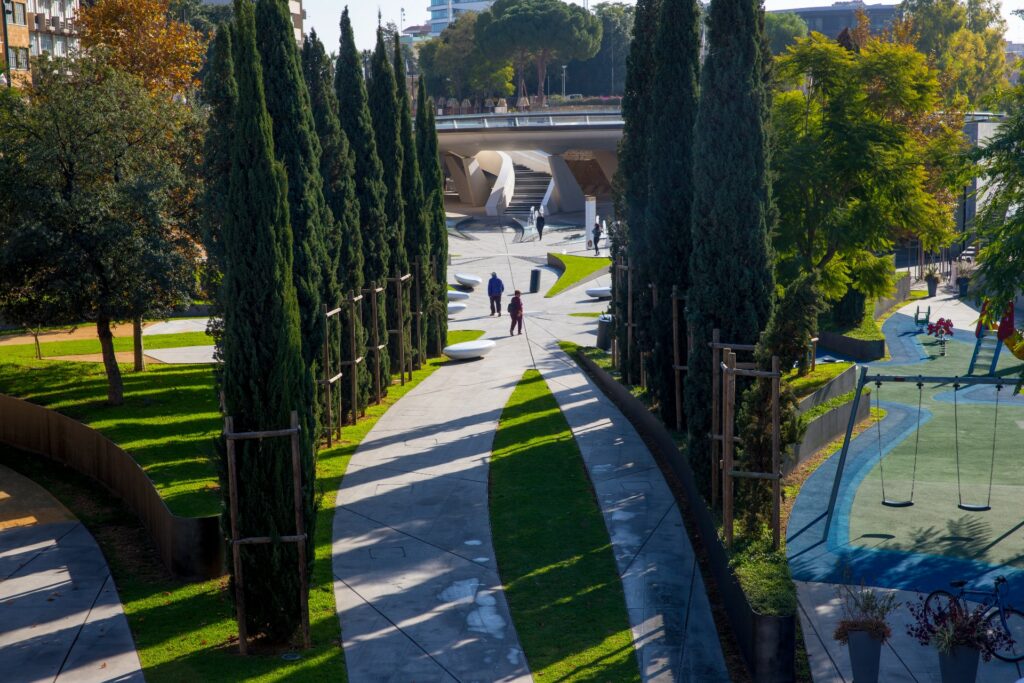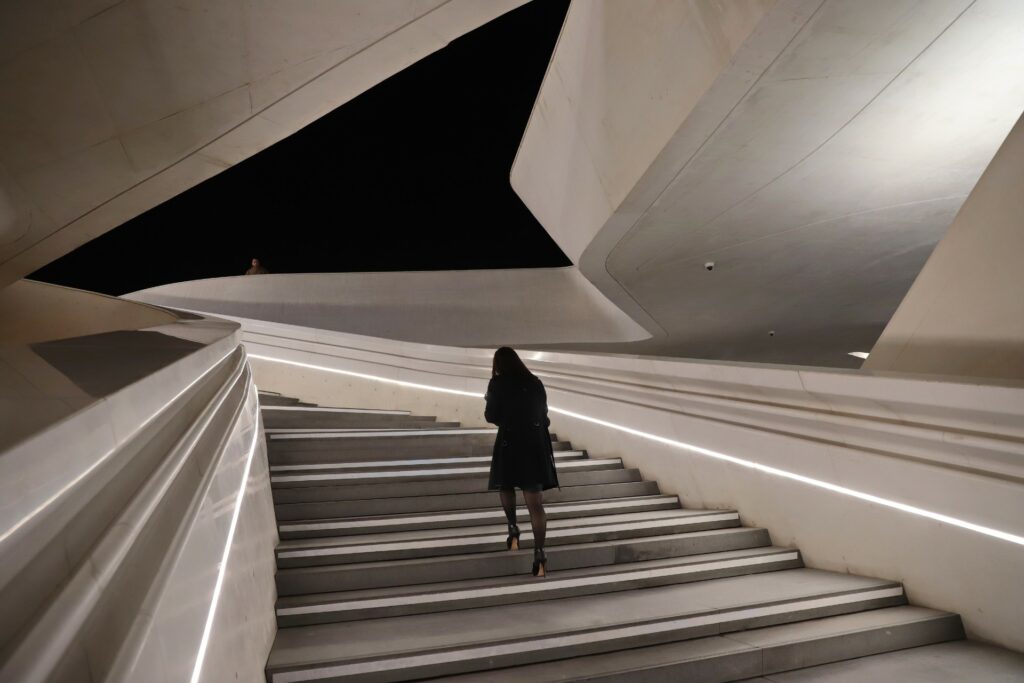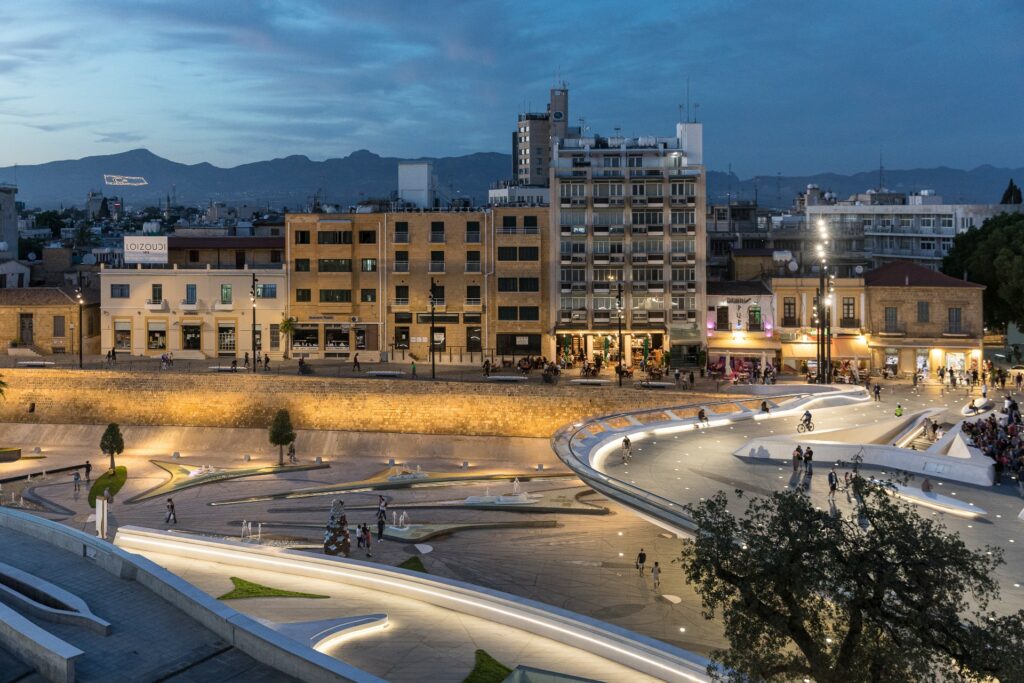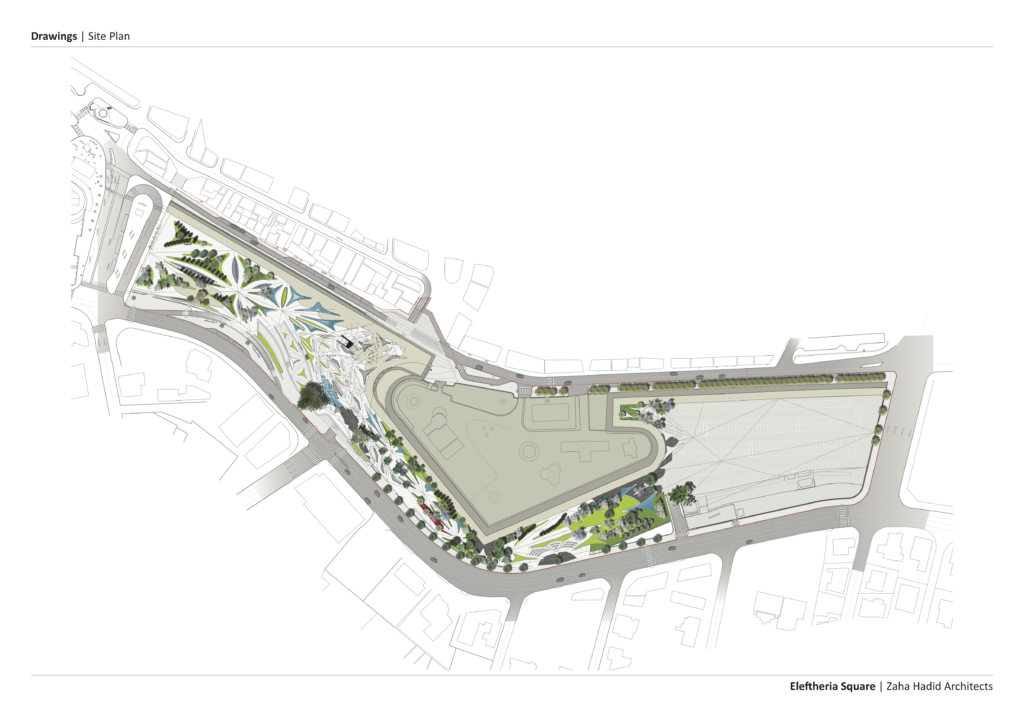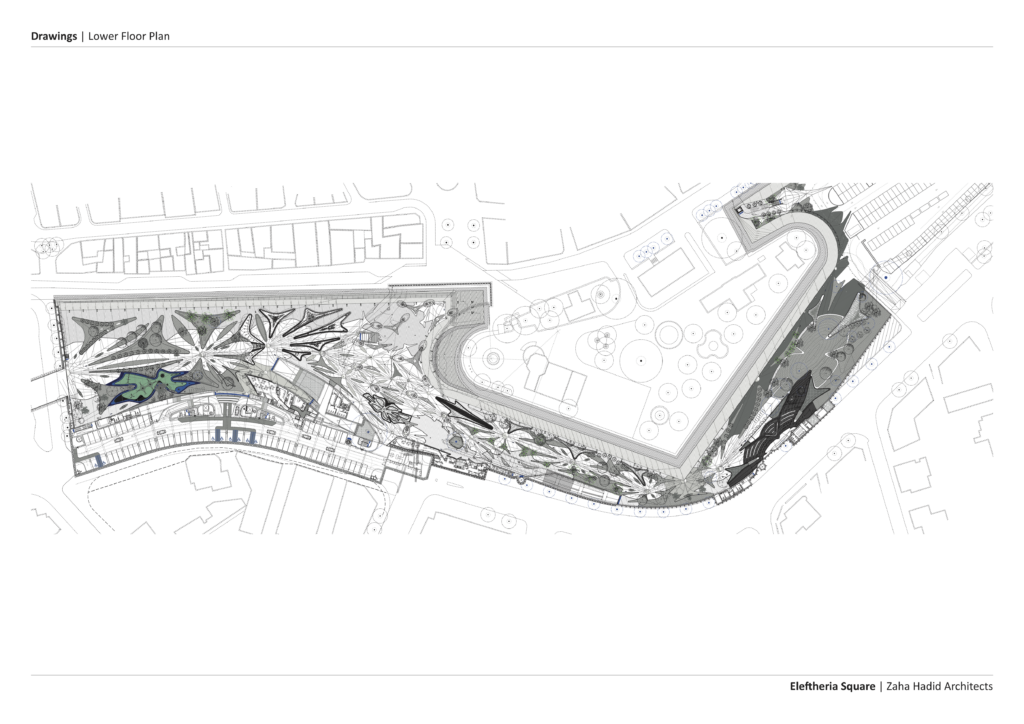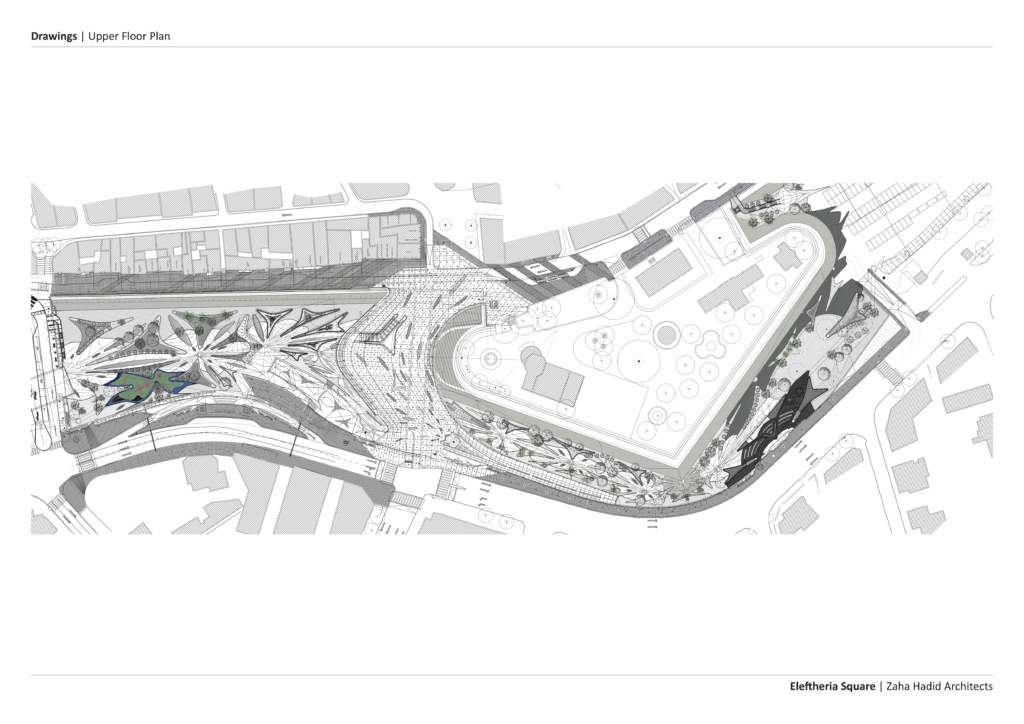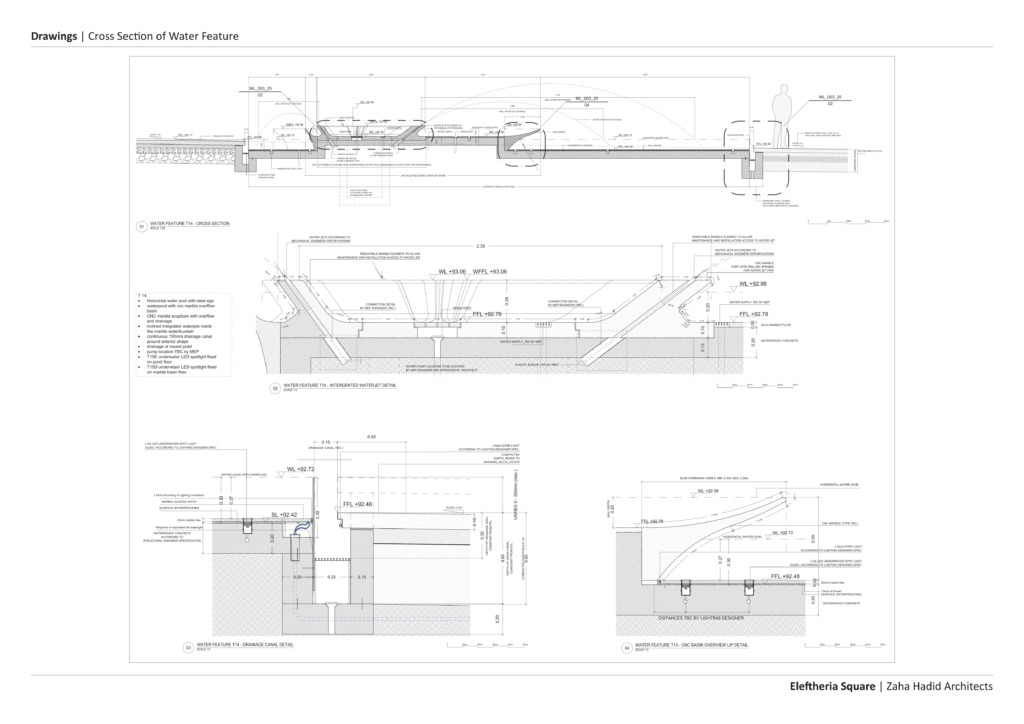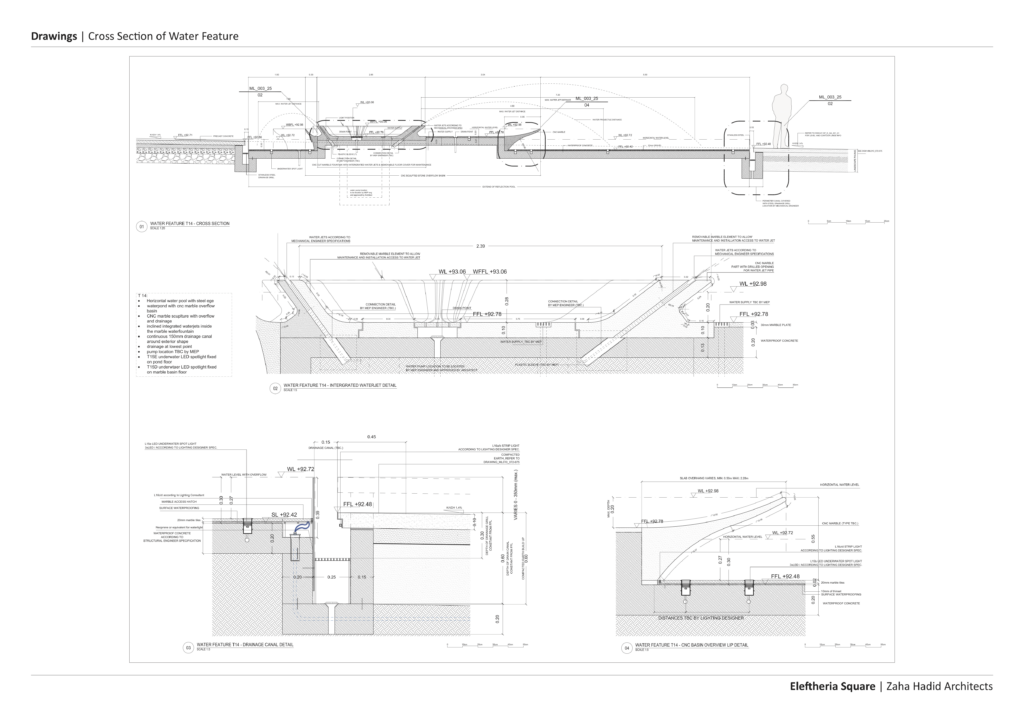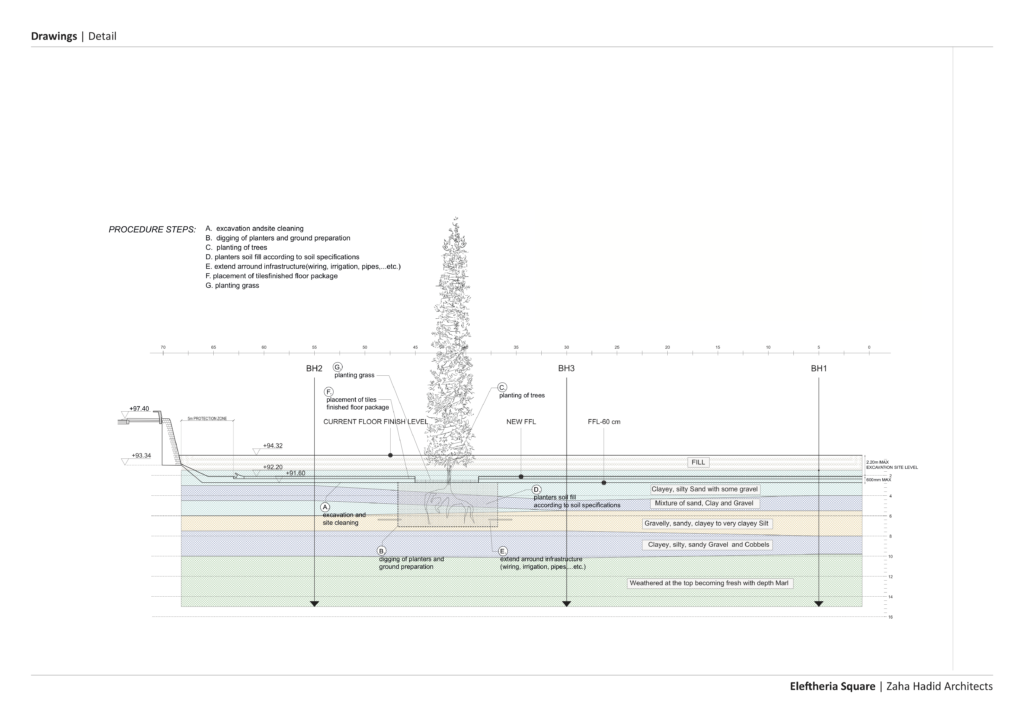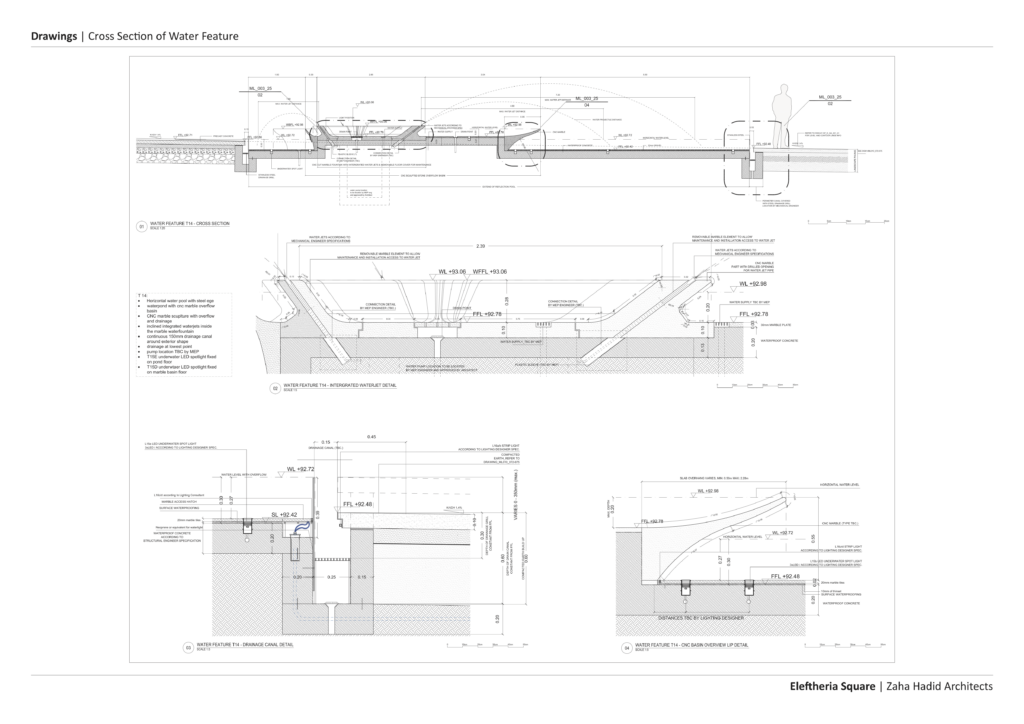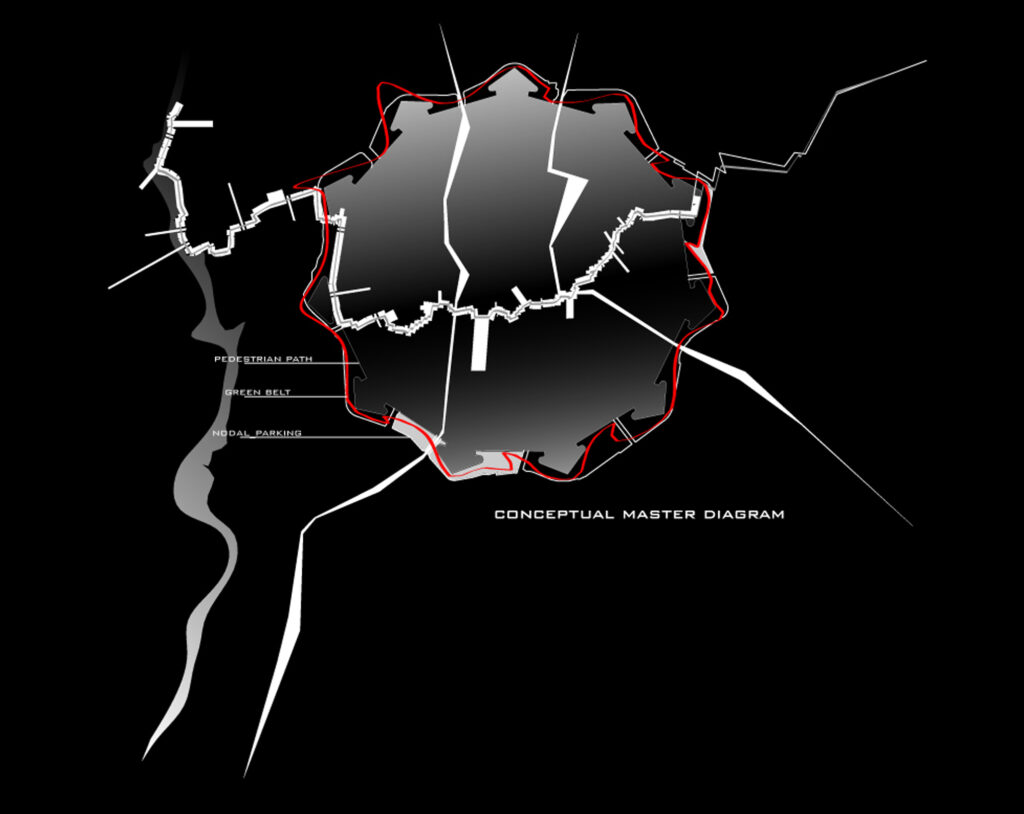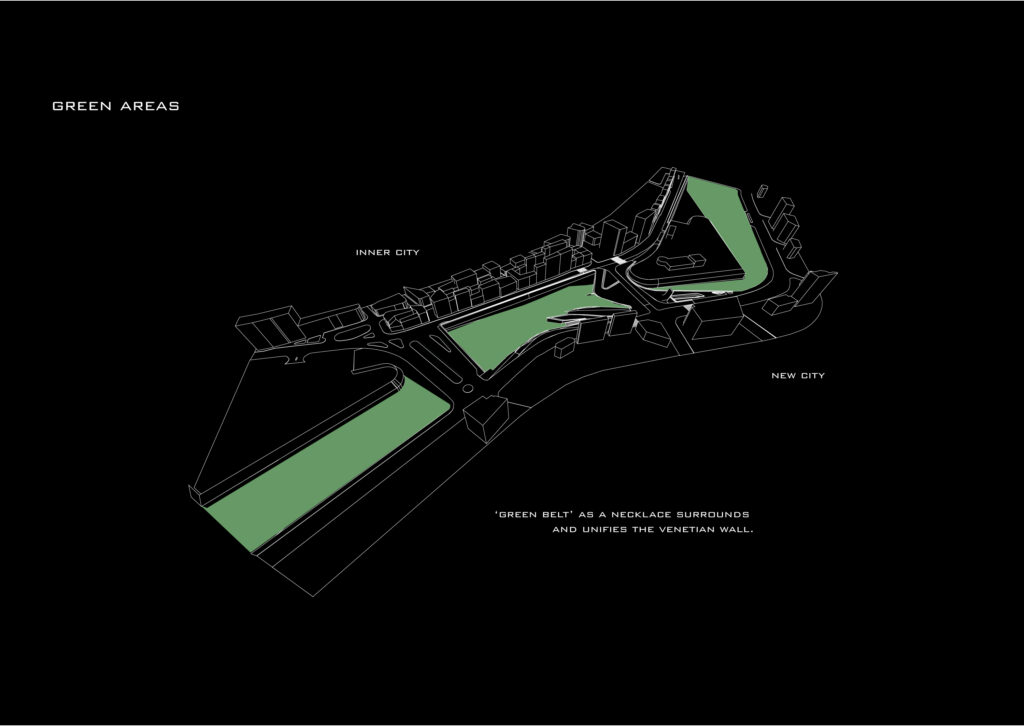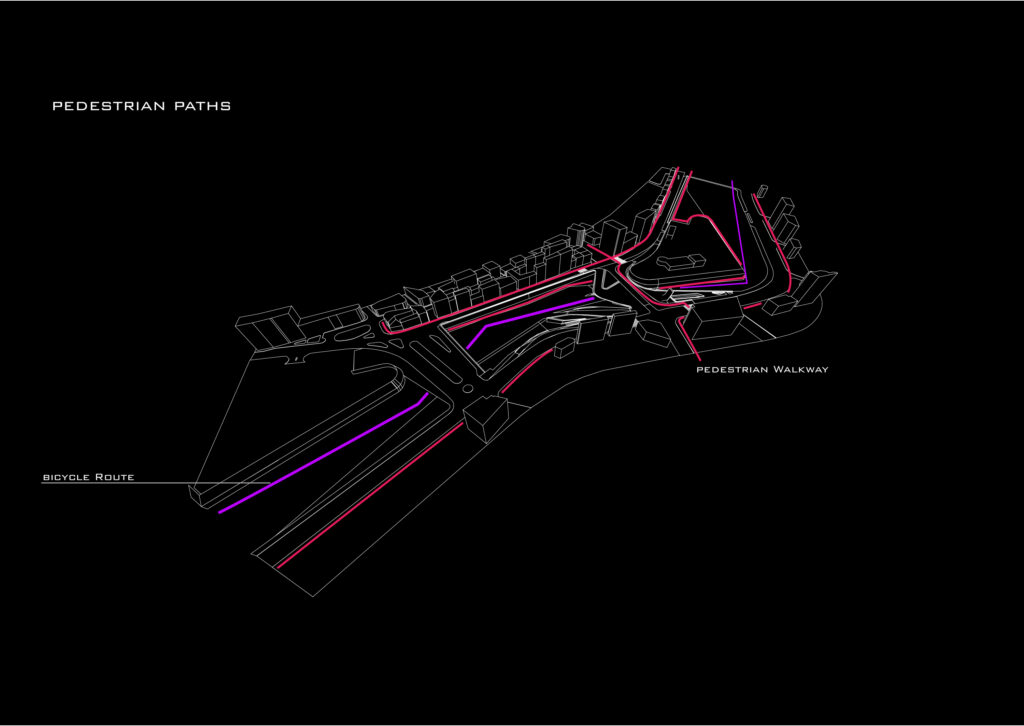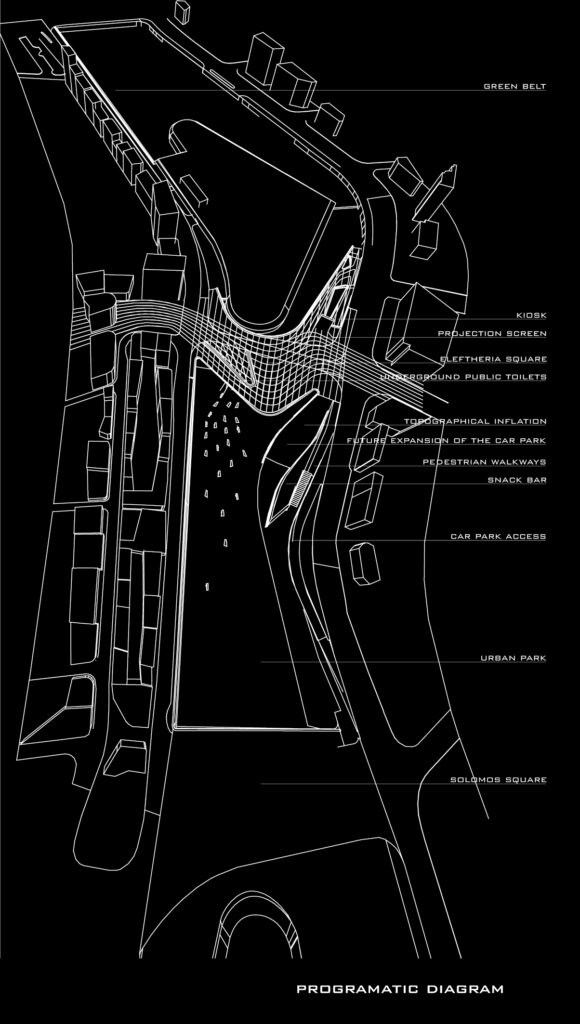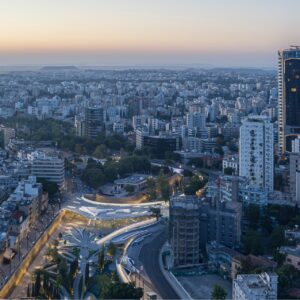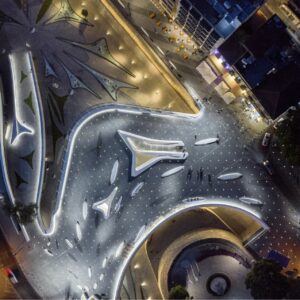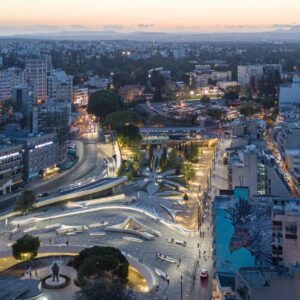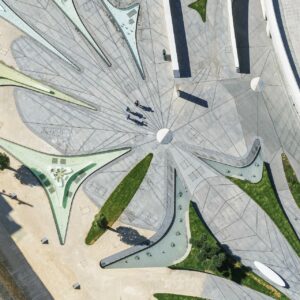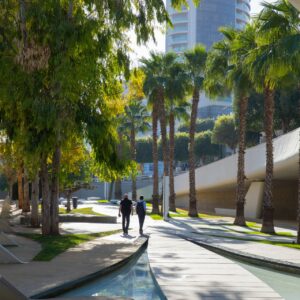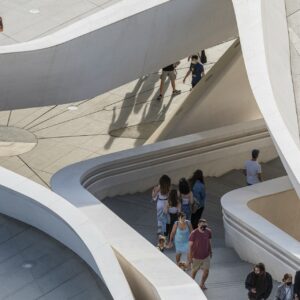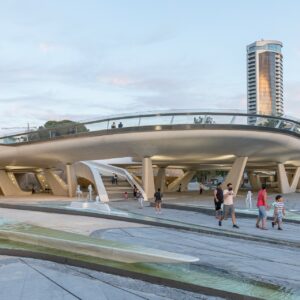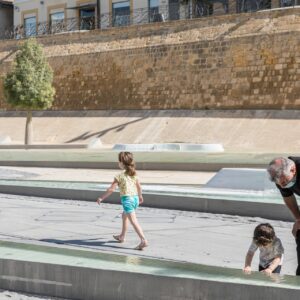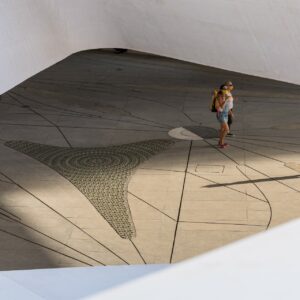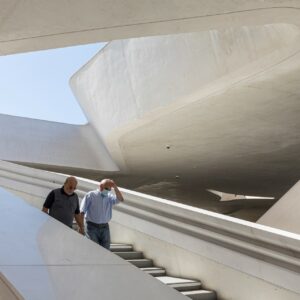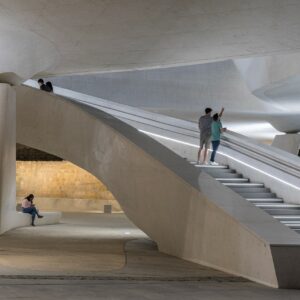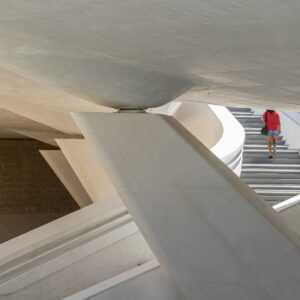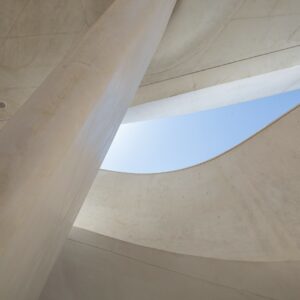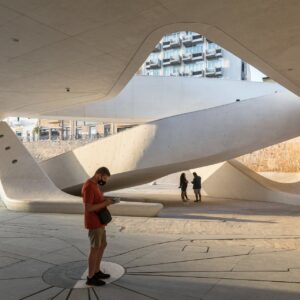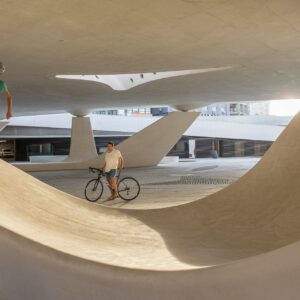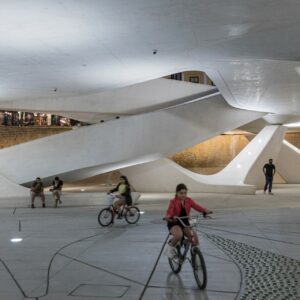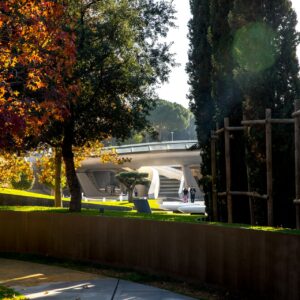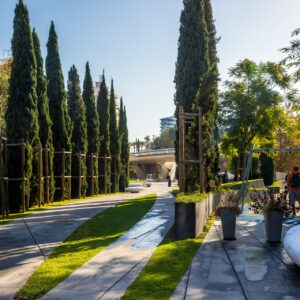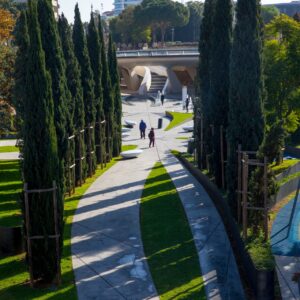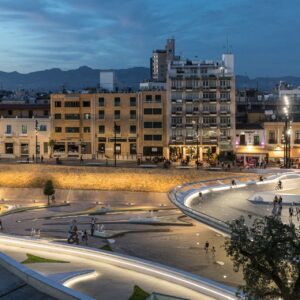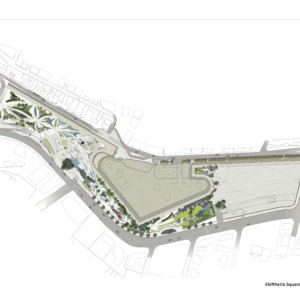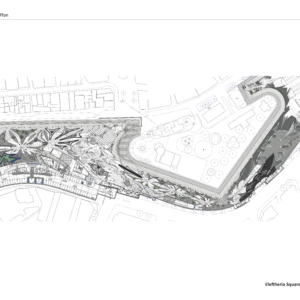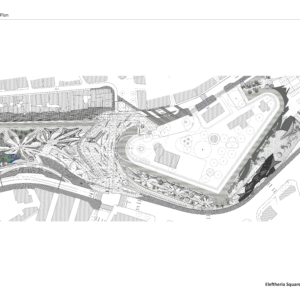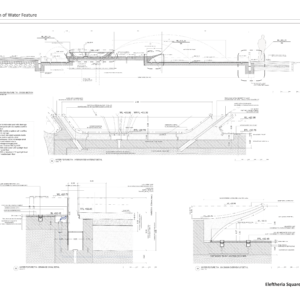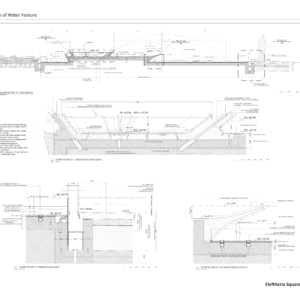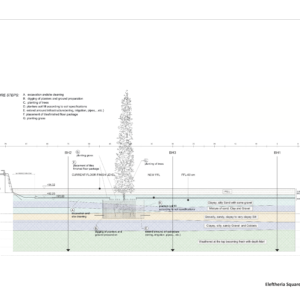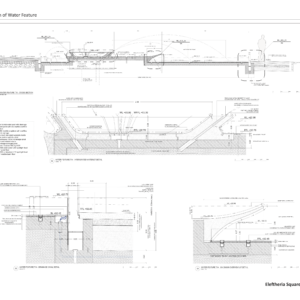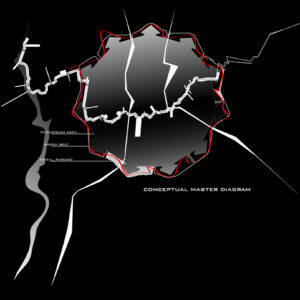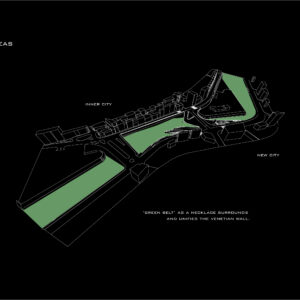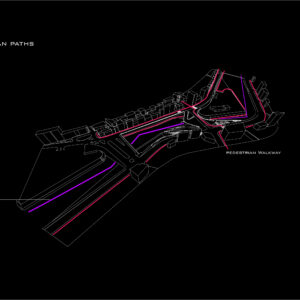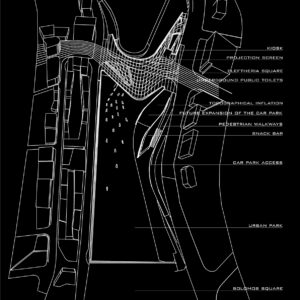- 14 December 2021
- 3580 defa okundu.
Eleftheria Square (Zaha Hadid Architects)
Establishing Eleftheria Square as the city’s primary gathering space, Zaha Hadid Architects’ (ZHA) design creates new connections intended to unite a divided capital. Nicosia’s massive Venetian fortifications separate the old city from its modern districts, while the city’s ‘Green Line’ divides the capital into two disparate communities.
Located near the centre of Nicosia, Eleftheria Square is adjacent to the Venetian Walls and the dry moat that encircles the city. Constructed in the Middle Ages and extensively rebuilt by the Venetians in the 16th century, these substantial defensive walls define the boundary of the oldest part of the capital, dividing the ancient city from the new districts outside the walls.
ZHA envisioned Eleftheira Square as the initial phase of a much larger urban plan that could be a catalyst for the reunification of the capital. The design ensures unobstructed views of the Venetian Walls, establishing these fortifications as an integral part of Nicosia’s identity, while also opening the dry moat for public use to create an orbital park that surrounds the city.
Transforming previously inaccessible areas of the moat with new civic plazas, gardens and palm-lined promenades, the moat can become a ‘green belt’ around the city. ZHA’s design proposes these new public spaces within the moat are extended to follow the ancient city walls and encircle Nicosia, reconnecting communities of this divided capital.
The Eleftheria Square design elevates the topography of the moat to create an upper-level bridge that meets the surrounding streetscape, establishing direct connections with the city’s urban fabric and defining a new public square in the heart of the capital.
Transformed into an urban park, the moat’s fluid geometries have been created through the process of triangulating the irregular forms of the ancient fortifications to establish points of ‘intensity’ that define seating, flowerbeds or water features within the new park.
The moat’s granite paving conveys a timeless solidity, while open joints between the granite slabs create a passive rainwater drainage system that allows the new trees planted within the moat to naturally balance groundwater levels and reduce erosion of the medieval walls’ foundations.
As the largest civic plaza in Nicosia, Eleftheira Square has been designed to host festivals and public events; its upper-level bridge and supporting columns are crafted in concrete, their sculptural forms ensure structural integrity in this seismic region and the base of each column morphs into seating.
The renovation of the square involved extensive archaeological excavations together with works to repair and protect the historic Venetian Walls. The redevelopment also includes two cafes within the square and the new underground parking lot with an access ramp on Omirou Avenue. Stairs and elevators directly connect with the bus terminal in Solomos Square.
ZHA’s transformation of Eleftheria Square weaves together Nicosia’s rich history with an unwavering optimism for the future. Bridging the Venetian Wall and moat, the square becomes an important gateway to the old city, its underground parking removing cars from the ancient city’s streets to enable further pedestrianisation that enhances the urban realm of this historic district while also creating new public gardens and plazas to be enjoyed by residents and visitors to the city.
